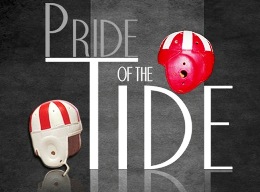
 |
PrideOfTheTide.com
|
|
Home
Media Guides Shop Online E-mail
Us |
Denny Stadium first opened its doors on September 28th 1929. On that day the Tide defeated Mississippi College 55-0. Denny Stadium was officially dedicated the following Saturday as part of the University's
Homecoming activities. Alabama Governor Bibb Graves dedicated the stadium to President Denny in front of a sell-out crowd of over 12,000. In attendance at the dedications ceremony were Theo Bilbo, Governor of Mississippi and William Little captain of the Crimson Tide's first football team. Shops all over Tuscaloosa closed on this day so that people could attend the game. The City wanted to show the University that Tuscaloosa was behind the Tide so that more games would be played at Denny Stadium. When
it was built in 1929 Denny Stadium consisted of only one large grand
stand on the west side of the field running parallel to what is
In
1937 the first expansion of the stadium took place on the east side of
the stadium with the addition of a 6,000 seat grand stand. Like the
grand stand on the west side, the east side grand stand covered the
length of the field but was only 25 rows high. The expansion ran
parallel to Colonial Drive. This brought the seating capacity of Denny
Stadium to 18,000.
The next face of expansion came in 1961 when coach Paul Bryant ordered the addition of 16 rows to each side of the stadium and 12,000 seats, 6,000 would be added to the east and 6,000 would be added to
west
grand stands. Plus a two-story state of the art press box would be
constructed on the west side grandstand. As part of this expansion all
the wooden bleachers would be covered with fiberglass by the start of
the '62 season. A VIP section with chair back seats was added to the
west side. This VIP section was located in the middle of the grand
stand on the top rows. This would be the first time since the stadium
opened in 1929 that any addition would be made to the original west
side grandstand. With this expansion, the fourth in the 31-year history
of Denny Stadium, the grand stands would reach their present day height
of 61 rows. Over 40,000 people could now watch the Tide play.
stadium. The south end zone would consist of 52 rows and the north end zone only 50 rows and a wheel chair section. The 1966 Tuscaloosa home opener against Clemson would be a special one for the Tide and its fans. Not only did the Tide beat Clemson 26-0; over 60,000 fans in the newly "bowled" Denny Stadium would witness the game. The first master plan for the stadium was completed. In 1929 George Denny had a dream of an enclosed stadium for the Crimson Tide and in 1966 his dream came true. In 1968 artificial turf would replace natural grass and would stay until 1991.
|
|